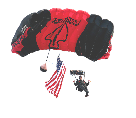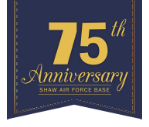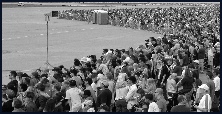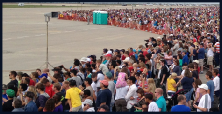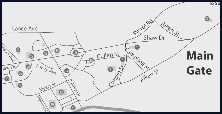SHAW AIR FORCE BASE, S.C. -- A small grey jet zooms through the air at just below the speed of sound, the grace of its precise turns and rolls sharply juxtaposed by the roar of its mighty engine. As simultaneously beautiful and dangerous as the bird of prey after which it is named, the aircraft is a paragon of defense technology that commands as much respect in combat as it does in times of peace.
The F-16CM Fighting Falcon is a compact, highly-maneuverable fighter aircraft designed for air-to-air and air-to-surface attack. This high-performance weapon system is heavily used in combat operations all over the world today, and the jet's development can be traced back to the early 1970s.
After the U.S. Air Force's experiences in the Vietnam War, the need for air superiority fighters became clear as a shift toward air-to-air combat as the primary means of fighting seemed inevitable. As a result, the Air Force Prototype Study Group was established in 1971 with a request for design proposals issued to aircraft manufacturers in early 1972.
The proposal request called for a 20,000-pound class fighter jet - about half the weight of the F-15 Eagle - with good maneuverability and acceleration optimized for the combat speeds and altitudes at which future air combat was expected to take place. While five manufacturers submitted proposals, only two were given funding to produce prototypes to be tested in an air combat fighter competition.
"The F-16 was the first aircraft designed to be aerodynamically unstable to help the aircraft maneuver with minimal energy loss," said Christopher Koonce, 20th Fighter Wing historian. "The single-piece bubble canopy and elevated pilot seat also gave the flier better visibility around the aircraft, which was a major improvement over other fighter aircraft from that timeframe. Those features put the F-16 at the top of the food chain when it entered the U.S. Air Force arsenal."
Ultimately, the F-16's lower operating costs, greater range and maneuverability, and superior acceleration, climb rates, endurance and turn rates won the competition and 15 full-scale development aircraft were ordered immediately.
The Fighting Falcon has since maintained an impressive track record and continues to be a valuable asset in both air-to-air and air-to-ground combat operations.
"Flying in an F-16 is like childhood dreams coming true," said U.S. Air Force 1st Lt. Chase Welch, 79th Fighter Squadron fighter pilot scheduler. "At the same time, there is a lot going on in the cockpit, so you don't have much time to think about it."
In addition to being used by the U.S., variations of the F-16 are flown by the armed forces in countries such as Turkey, Belgium, Norway and the United Arab Emirates. Although the F-16 has participated in more than 200,000 sorties internationally, it has been shot down just six times in more than 40 years of flight.
With roots in the Cold War and flight time in every conflict since, the F-16 Fighting Falcon has repeatedly proven itself to be an invaluable tool in the defense of the U.S., its interests and its allies. Boasting more than 40 years of air superiority, the F-16 was, is and will continue to be a key player in the U.S. Air Force's proud legacy of valor.


